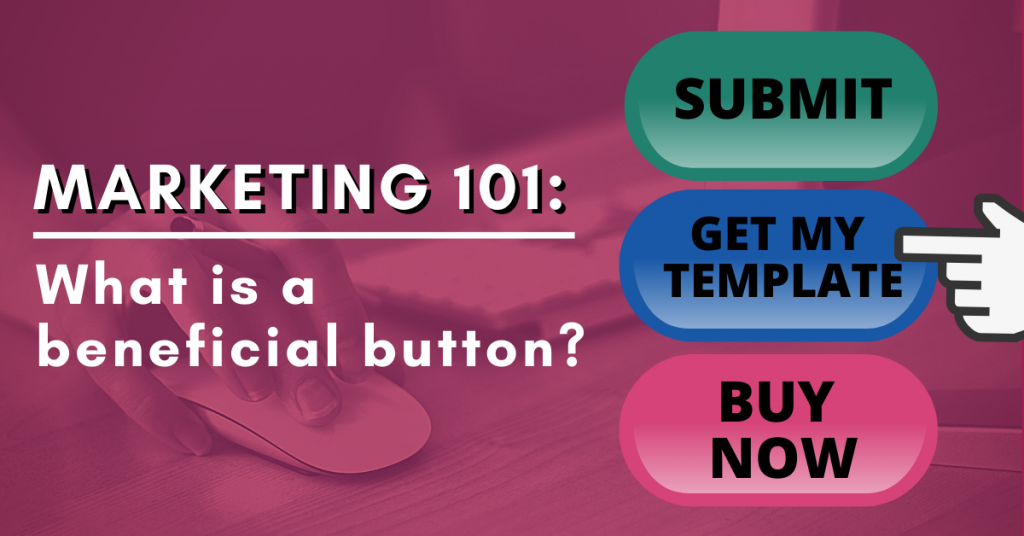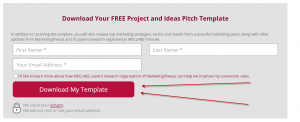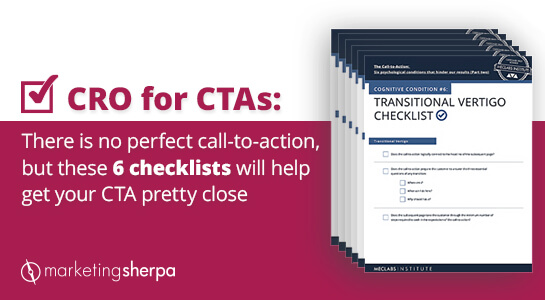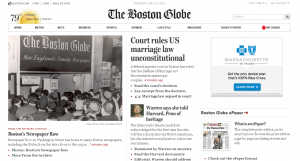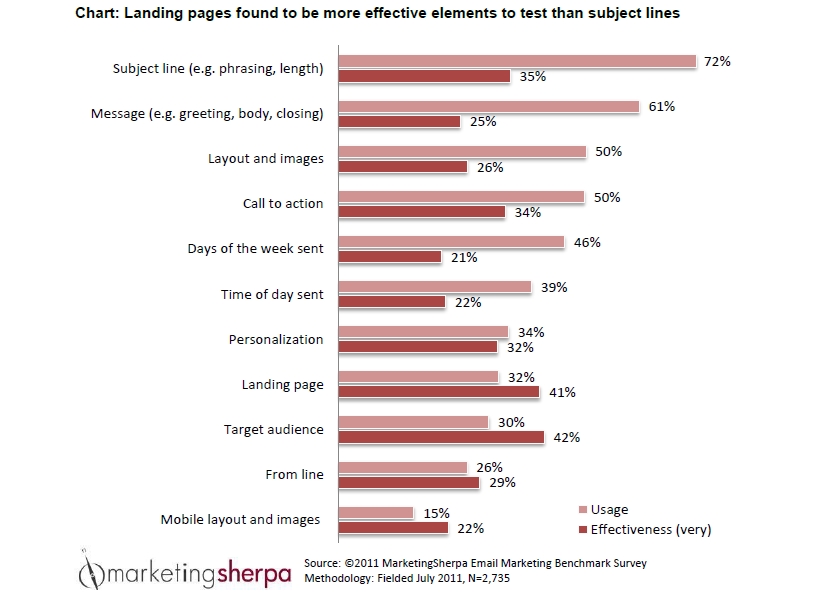At MarketingSherpa, we bring you the ideas and inspiration to help you come up with your next great marketing idea. We do that through our marketing case study articles, our data charts, and our How I Made It In Marketing podcast discussions.
The idea is – you are the hero of your own journey, sometimes you just need a little inspirational grit to build your next great pearl of wisdom around.
That’s usually great. Marketers are ideas people always looking for that next game-changing idea.
Of course, sometimes you just want something done for you. So today, we’re bringing you a bunch of tools built on MeclabsAI (MarketingSherpa’s parent company) leveraging not only MarketingSherpa’s 25 years of business journalism, but also Meclabs Institute’s patented marketing methodology.
No need to think. Just click and get something done for you. And MeclabsAI is free to try, you don’t even have to register to get started (although you will get additional free interactions if you do register).
Here’s a quick look at some of the 14 apps in MeclabsAI, along with a small piece of the outputs they gave me when I tried to get help on MarketingSherpa’s homepage.
Value Prop Analyzer
MeclabsAI CEO Flint McGlaughlin has taught extensively on value proposition, and he has built that methodology into this app.
Just give this app your homepage URL, paste in the contents of your homepage, or share the core of your value proposition and it will apply the Value Proposition Ranking Criterion, empowering you to identify and leverage your brand’s unique strengths while pinpointing areas ripe for optimization.
For example, when I paste in the MarketingSherpa homepage URL, it gives me…
Let’s delve into the Value Prop Ranking Criterion to assess your value proposition’s power across four dimensions: Appeal, Exclusivity, Clarity, and Credibility.
| Evaluation Category |
Score (1-10) |
Feedback |
| Appeal |
8 |
Your offer has high appeal; marketers universally seek effective, research-based strategies to improve outcomes. Case studies and proven methodologies are highly attractive. |
| Exclusivity |
7 |
Specializing in what works across all marketing aspects with a research-driven approach provides a unique edge. However, the marketing research and training space is competitive, suggesting room for further differentiation. |
| Clarity |
9 |
The offer is clear and straightforward, promising practical research, case studies, and training for better marketing results. The benefit to marketers is immediately understandable. |
| Credibility |
8 |
Publishing research for the community and offering agency services rooted in expert knowledge build strong credibility. Testimonials or case results could further this score. |
| Overall Score |
32/40 |
Your value proposition is solid with much strength in clarity and appeal. Enhancing exclusivity and credibility could further elevate its power. |
Your value proposition ranks as High on our scale, indicating a significant strength in attracting and retaining your target market’s interest. It suggests your offering is well-received yet harbors potential for enriched distinctiveness and trust-building efforts.
Competitor Analyzer
“Know thy self, know they enemy,” Sun Tzu said. Competitor Analyzer can help outsmart the competition.
Just give it the URL for your website and a competitor and let the insights roll in.
First, I put in the URLs for MarketingSherpa and The Wall Street Journal, but the Competitor Analyzer called me out on that – “The websites you’ve provided are not typically direct competitors, as one specializes in marketing research and insights (MarketingSherpa), and the other is a comprehensive news outlet with a strong emphasis on financial and business news (The Wall Street Journal).”
So then I tried MarketingSherpa and MarketingProfs, and here is a part of the response…
Website Components Comparison
| Component |
MarketingSherpa |
MarketingProfs |
| Headline |
Practical Case Studies, Research and Training for Marketers |
Improve your marketing right now. Marketing Training for Professionals. |
| Value Prop |
Specializing in tracking what works in all aspects of marketing. |
Offering marketing training for professionals. |
| Proof Points |
Publishing research for the benefit of the MarketingSherpa community; agency services for customer-first marketing |
Utilizes cookies for personalization, traffic analysis; provides a broad range of marketing topics and resources |
| CTA |
View More Content; Join our thousands of weekly case study readers; Learn More |
No explicit CTA identified beyond cookie consent and service details |
Chat Transcript Analyzer
Zoom sessions are harder to present on than in-person speaking, at least for me. I have a harder time connecting with the audience.
So I love the chat feature because I can get a little feedback, and tweak what I’m talking about to better serve the audience.
That’s a little easier to do when there is another speaker on the Zoom as well. Then I can read through the chat while that person is speaking.
If it’s only me, it’s hard to walk and chew gum, and often the best I can do is read the chat after. But it can be a lot of info to take in.
Chat Transcript Analyzer does a nice job summarizing it all for me. For example, I spoke on the AI Guild main session about process-level value prop and AI last week, pasted in the chat transcript, and here is part of the analysis I got…
Mathematical Analysis:
| Metric |
Value |
| Total Number of Words |
970 Words |
| Total User Interactions |
59 |
| Average Words per Interaction |
16.4 Words |
| Question to Statement Ratio |
1:3 |
| Engagement Challenges (Drop-off points) |
Inconclusive due to format |
| Sentiment Shifts |
Positive overall, humor used effectively |
| Engagement Depth Ratio |
Varied, informal among participants |
I’m glad to see that humor was used effectively. I love stand-up comedy. And I always love to infuse a bit of that ethos every time I speak.
Webpages Analyzer
Just past in your URL. Here is part of the analysis I got for MarketingSherpa…
| Element |
Details |
| Headline |
Practical Case Studies, Research and Training for Marketers |
| CTA (Call To Action) |
– Join our thousands of weekly case study readers. <br> – See Course (for the marketing course) |
| Main Bullet Points |
– Specializing in tracking what works in all aspects of marketing. <br> – Offering agency services for more effective customer-first marketing. <br> – Publishing research for the MarketingSherpa community to improve marketing results. |
| Core Pricing |
Not explicitly mentioned on the homepage. |
| Value Proposition |
MarketingSherpa is a research institute specializing in tracking what works in all aspects of marketing, with the goal to give marketers the instructions, statistics, and inspiration to improve their results. |
| Main Evidentials |
– Case studies and research publications <br> – Free online marketing course offering <br> – A variety of content including articles, videos, and podcast episodes |
CTA (Call to Action) Builder
This app aligns with Micro Yes #7 (Yes, I will trade) and Micro Yes #8 (Yes, I will finish) in Meclabs Micro Yes Architecture approach to creating effective marketing.
When I pasted in MarketingSherpa’s homepage URL (and you can use landing pages as well), I like this point from MeclabsAI…
Value:
-
- Emphasizing immediate access to valuable resources, a CTA might read, “Gain Free Instant Access to Exclusive Marketing Insights,” showcasing the value exchange—action for knowledge.
Nowhere on the homepage do we say that MarketingSherpa’s case study articles, data charts, and interviews are free (they didn’t use to be).
Headline Builder
This app aligns with Micro Yes #1 (Yes, I will pay attention) and Micro Yes #2 (Yes, I will engage deeper).
When I pasted in the homepage URL, part of what it gave me was a breakdown of the nouns, verbs, and adjectives I was using, which is a great start to playing with different headline options.
Nouns, Verbs, and Adjectives Analysis
| Headline |
Nouns |
Verbs |
Adjectives |
| 1 |
Marketing Results, Case Studies |
Achieve, Unlock |
Unmatched, Exclusive |
| 2 |
Marketing Approach, Research |
Transform, Learn |
Comprehensive |
| 3 |
Campaigns, Insights, Marketers |
Elevate, Apply |
Leading |
| 4 |
Competitive Edge, Marketing Studies |
Gain, Access |
Competitive, Groundbreaking |
| 5 |
Marketing, Case Studies |
Discover, Dive |
Practical |
Appeal Builder
This app ties into Micro Yes #5 (Yes, I want this now).
If you want a new message crafted, provide it details about your product or service.
If you want an existing message analyzed, share the current message along with specific objectives or concerns.
Here’s a sentence I liked from what Appeal Builder gave me, “Unearth practical case studies, research, and training designed not just to inform but to transform.”
Conversion Index Analyzer
Just paste in a landing page or homepage URL, and this app will use Meclabs well-known Conversion Sequence Heuristic – C=4m+3v+2(i-f)-2a – to provide an analysis.
For example, when I pasted in the MarketingSherpa homepage URL, I like how it summed up what we’re trying to do to tap into the motivation of our visitors – “The homepage of MarketingSherpa offers a broad scope of resources, including articles, videos, podcasts, and free resources, that align well with the intrinsic motivations of marketers seeking research-based insights and actionable marketing strategies.”
Article Analyzer
When I posted in the URL for a recent MarketingSherpa article – Strategic Foundations of Niche Launch Success: B2C marketing examples with results – It has this nice summary in the FAQ…
- What is the main advice for competing against big brands in a niche market?
- The main advice is to focus on smaller, overlooked opportunities where larger brands might not be active, leveraging SEO, and using AI for content creation to establish a presence in niche markets.
Video Transcripts Analyzer
When I pasted in the transcript from the most recent episode of How I Made It In Marketing – an interview with Nicole Sumner, Brand Director, Ollie – it produced an FAQ that included this key hard-won lesson from Sumner’s career journey:
Q: What was a key takeaway from Nicole’s missed job opportunity?
A: The key takeaway is the importance of explicitly communicating your career ambitions and interests to be considered for opportunities.
So even though this app is called Video Transcripts Analyzer, it works with audio-only content like our podcast as well.
Related resources
Customer-First Objectives: Discover a 3-part formula for focusing your webpage message
Website Wireframes: 8 psychological elements that impact marketing conversion rates
Website Wireframes: See real webpages optimized for marketing conversion



